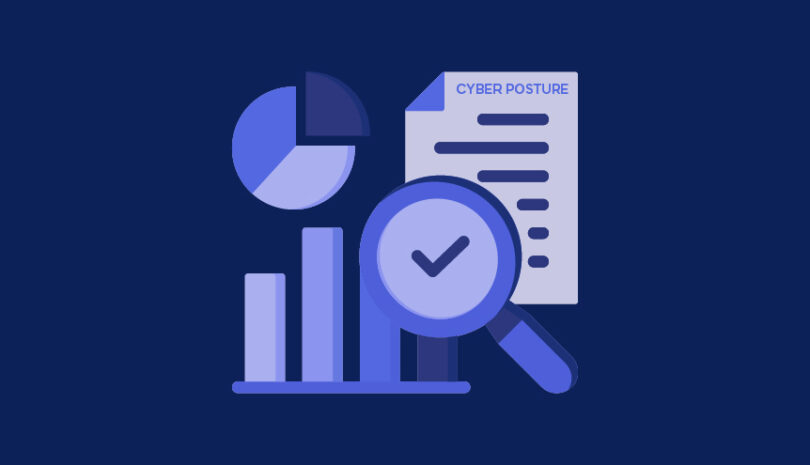The rapid expansion of attack surfaces is not the challenge organizations face today; it’s a lack of visibility into their attack surface. According to Randori, a subsidiary of IBM, after the implementation of an extended attack surface management solution, 31% of organizations discover sensitive data they had not known was exposed previously; 30% have unknown or third-party hosted assets; and more than a quarter (29%) revealed previously unknown misconfigurations and vulnerabilities in their systems. One of the main components of these attack surface management solutions is attack surface analysis.
What is Attack Surface Analysis?
Attack surface analysis maps your attack vectors to help identify the vulnerabilities in your organization’s system and the likelihood that attackers could exploit them to gain access to sensitive data in an internal or external attack. An internal attack surface analysis examines how an insider might exploit vulnerabilities in your system, whereas an external attack surface analysis examines how a hacker might view your network infrastructure and system from the outside.
The Two Main Components of an Organization’s Attack Surface
An attack surface refers to the different entry points an attacker can use to exploit a vulnerability and pose a security risk to your organization. The larger an attack surface is, the more potential entry points there are for attacks and the more difficult it is to protect. As a result, many organizations look to third-party security risk management software for assistance in their attack surface management.
Organizations have two main types of attack surfaces:
1) Physical Attack Surface
The physical attack surface includes any endpoint an attacker can gain physical access to, including your data centers, computers (both desktops and laptops), mobile devices, the office building and access control systems, etc. Vulnerabilities in a physical attack surface might lead to physical break-ins, fires, or floods. Organizations may install various operational security controls to defend against these threats, such as access control cards, biometric access control systems and fire suppression systems.
2) Digital Attack Surface
A digital attack surface includes your organization’s hardware, software and network infrastructure, as well as those connected to its third parties. For example, in addition to the endpoints from various devices such as laptops, servers and IoT devices that connect directly to your hardware, network and infrastructure, an organization may also have additional entry points from its third-party service and applications that an attacker can exploit.
An organization’s digital attack surface can be divided into several categories:
- Network attack surface. This includes ensuring that your organization’s network design is secure and that critical systems and services, firewalls, VPNs, Intrusion Prevention Systems (IPS), etc. are set up securely and configured correctly.
- Application attack surface. This includes web applications, the amount of code, data inputs, any systems running on operation systems, and network communication ports. Web application services running on an operating system offer entry points for attackers. The more code your organization uses, the greater the risk of potential vulnerabilities.
- User attack surface. An organization’s policies and procedures are investigated to see if it helps to minimize the risk of social engineering attacks, human errors and the risk of malicious behavior within the company, such as insider threats. Users can be both unauthorized users as well as those with a high level of access privilege.
How do Attackers Gain Unauthorized Access to Sensitive Data?
Attackers gain unauthorized access to sensitive data through various entry points or attack vectors in the digital attack surface. After identifying these entry points, attackers can then use them to launch social engineering, malware, ransomware, or any other type of cyberattack. Attack surface analysis is a crucial strategy to mitigate potential risks of security incidents.
Common attack vectors include:
- Weak passwords. User accounts, applications, and networks with passwords that aren’t secure are susceptible to brute force attacks and are one of the most common attack vectors for data breaches.
- Misconfigurations. Misconfigured servers, firewalls, ports and even IoT devices are all entry points for attackers. For example, when an IoT device is misconfigured incorrectly, attackers can exploit critical systems (such as a hospital operating system), causing the interruption and halting of services to patients.
- Outdated devices and software. Known vulnerabilities exist in older versions of software and devices. This is why it’s important for organizations to update their systems and hardware on a regular basis.
- Shadow IT. Since it’s under the radar of IT and monitoring systems, it has a higher potential for misconfigurations, outdated software, and weak passwords, creating an opportunity for attackers to use it to exploit vulnerabilities.
- Third-party software and services. Attackers can exploit vulnerabilities not only in your organization’s software and services but also in your third parties, using those entry points to launch social engineering attacks, injection attacks, phishing attacks, etc.
How Digital Attack Surface Reduction Helps Mitigate Risk
Your organization’s attack surface may include dozens, or even hundreds of cloud services, plugins, and integrations of third-party software and services. Since organizations rely on these services and software to operate, it’s not always possible to disconnect from them.
However, you can still reduce your digital attack surface using a few different methods:
- Limit user account access. Restricting user privileges and implementing zero trust help contract your attack surface by ensuring that only authorized users have access to the data and information that they need.
- Eliminate excess code, applications and services. The less code from your organization that is exposed, the fewer opportunities a hacker has to exploit it. Third-party applications and services that are not used pose unnecessary risks of vulnerabilities and shadow IT.
- Implement microsegmentation. Microsegmentation separates your network into different areas, each with its own security controls and policies, making it more difficult for an attacker to move laterally through your network.
How Panorays Helps You Manage Your Attack Surface
With the increasing reliance on third-party software and services, it’s critical that your attack surface analysis includes the ability to identify third-party risk. Panorays supports external attack surface monitoring and gives you full visibility of your expanded supply chain, including third-party, fourth-party and n-party risks. Discover internal assets, including shadow IT on the application, network and human layers of the attack surface. In addition, its Risks Insights and Response Portal delivers alerts of any breaches or incidents in your supply chain that could impact your organization and third parties, allowing you to respond quickly by sending automated and customized questionnaires to only the relevant parties involved.
Want to learn more about how to gain full visibility into your extended attack surface? Get started with a free demo today.
FAQs
Attack surface analysis maps and identifies the vulnerabilities in your system that could be attacked, prioritizing them according to how sensitive the data is that they can access, steal or expose. It then takes steps to mitigate these security risks. Attack surface analysis is one of the crucial elements of attack surface management (ASM), along with attack surface monitoring, vulnerability management and vendor risk assessment. Since the attack surface of many organizations is complex, many ASM third-party software tools exist to automate this process.
An example of an attack surface is your organization’s network attack surface, one of the categories of your digital attack surface. The network attack surface includes ports, applications, websites and any critical systems your company needs to operate, as well as services such as email servers, firewalls, etc.
An attack surface is an entry point an attacker uses to gain access to your system or network to execute an attack. An organization’s attack surface can be categorized into two main types:
1. Physical attack surface. Includes an organization’s mobile devices, data centers, desktops and mobile devices – any physical endpoint an attacker can use to interrupt or halt operations.
2. Digital attack surface. Includes an organization’s network, services and user account access and endpoints that are accessible from a third party. These endpoints are a starting point for an attack that exploits sensitive data and information of your organization.



